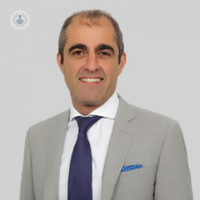Considering a facelift? Here's your all-you-need-to-know guide
Written in association with:A facelift procedure can be an extremely effective way to rejuvenate the physical appearance of the face and can make patients look up to 15 years younger.
In our latest article, revered expert London-based plastic surgeon, Mr Navid Jallali, describes what a typical facelift surgical procedure involves, how long recovery time takes, and walks us through the potential risks involved.

What exactly does a facelift do and what are the different types of facelift?
A facelift is a surgical procedure that is performed in order to improve and reverse the ageing process that occurs in the face. The ageing process involves loss of facial volume, which leads to ptosis (drooping) of the soft tissue of the eye area of the face.
Patients also develop wrinkles as a result of the loss of volume. The purpose of a facelift is to improve the facial appearance, by reversing the ageing process and there are a number of techniques available. Most patients do require some volume replacement, in the form of fat grafting as part of the facelift operation.
What results can be expected from a typical facelift procedure?
A facelift is a very effective operation. The degree of facial rejuvenation can be varied according to the patients’ needs. In general, a facelift will reduce the ageing process by at least ten years, and if fat grafting is carried out at the same time, patients can improve or reverse facial ageing by up to 15 years.
A facelift is an extremely successful procedure but does carry with it some complications that patients should be aware of. These complications include:
- scarring in front of and behind the ear
- facial nerve damage
- numbness
- asymmetry
In general, serious complications are rare, and most patients recover from the surgery within two to six weeks following their procedure.
How is the procedure performed?
The operation is carried out under general anaesthetic. Following anaesthesia, a cut (incision) is made in front of the ear and the skin is carefully dissected from the underlying facial structures.
I normally carry out a SMAS procedure in order to resuspend the facial structures. Most patients opt for facial fat grafting and following liposuction to one area of the body, the fat is cleaned and reinjected into the face.
In most cases, I will also typically carry out both an upper and lower blepharoplasty, which involves a small cut underneath and above the eyelids. These tend to heal very well and are usually removed after day five.
The patient will be required to stay in hospital for one night and they will be discharged with light dressings, which are just steri-strips in front of and behind the ear. The patient will then return to the clinic after two weeks for the wound to be assessed.

What are the main risks involved?
In general, a facelift is a very safe operation with minimal complications. The facial anatomy has good vascular supply, and hence, infections are extremely rare.
There is a risk of bleeding, but this is more common in men, particularly those who smoke. The major risk is potential damage to the facial nerve, which would move the facial muscles. This, however, occurs in less than one percent of cases.
There is also a slight risk of damage to the nerve that supplies the ear, and this will lead to numbness of the earlobe. Swelling and bruising are the commonest complications which can typically last up to two weeks following the operation.
How long does recovery take?
Recovery from a facelift procedure usually takes around two to six weeks and depends whether or not fat grafting has been carried out. Most wounds around the eye will heal within five days.
The preauricular (in front of the ear) incision usually heals within one week and the cut behind the ear can take up to two weeks to fully heal. Facial bruising and swelling will have settled usually following two weeks after the surgery and most patients achieve their optimal result (even with fat grafting) after six weeks.
If you are considering undergoing a facelift procedure, be sure to check out Mr Navid Jallali’s Top Doctors profile to book a consultation with him.



